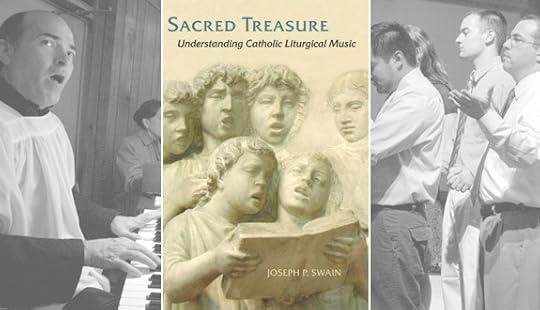Liturgical Music Today: The Best of Times, the Worst of Times

Liturgical Music Today: The Best of Times, the Worst of Times | Carl E. Olson | CWR
Joseph P. Swain, author of Sacred Treasure: Understanding Catholic Liturgical Music, with straight talk about sacred music.
Dr.
Joseph P. Swain
is associate
professor of music at Colgate University and author of several
books about music, including A
Historical Dictionary of Sacred Music (2006),
Harmonic
Rhythm: Analysis and Interpretation (Oxford,
2002), and Musical
Languages (Norton,
1997). He has also written numerous articles for journals including
Music Perception, Journal of Musicology, Music Analysis, Criticus
Musicus, Opera Quarterly, and
Catholic World Report. His
most recent book is Sacred
Treasure: Understanding Catholic Liturgical Music (Liturgical
Press, 2012), which is described as “an
exercise in pragmatic music criticism. … Sacred
Treasure shows
how the hard facts of music must be taken into account in any
holistic conception and any lasting form of liturgical music.” Dr.
Swain was recently interviewed by Carl E. Olson, editor of Catholic
World Report,
about his book and the state of liturgical music, what Vatican II
actually said about sacred music, and what can be done to improve the
music heard in parishes throughout the United States and beyond.
CWR:
Taking up
Dickens' famous opening lines in A
Tale of Two Cities,
you open your book by stating that when it comes to
Roman Catholic liturgical music, it is both the worst of times and
the best of times. What are some examples of each? What is unique
about this particular era as far as liturgical music is concerned?
Dr.
Swain: At no time in history has the Church had to hand, in print
music and recordings, such a wealth of liturgical music of amazing
variety and of the highest quality. At no time have such numbers of
highly trained church musicians been available to sing and play that
music. At no time has there been such a pitch of interest in liturgy
and its music on the part of everyday, churchgoing Catholics. These
are the best of times.
At
the same time, only a tiny fraction of the liturgical music thought
by Catholics and non-Catholics alike to be among the most beautiful
ever conceived is ever heard by everyday Catholics at mass. The fine
professionals who want to contribute their services are often not
allowed to perform it; they put aside their long training and look
for other kinds of work. And the interest in liturgical music has
apparently led only to strife within and between parishes, rather
than healthy traditions of liturgical music, and there appears to be
no end in sight.
Such
paradoxes are what make our times unique in the history of liturgical
music.
CWR:
Sacred Treasure covers a tremendous amount of
material—musical, theological, historical, and cultural—and you
describe it, in the Preface, as "an exercise in pragmatic music
criticism." What was your main goal in writing the book? How
might, respectively, a liturgist, a musician, and an "average"
lay person benefit from reading it?
Carl E. Olson's Blog
- Carl E. Olson's profile
- 20 followers



